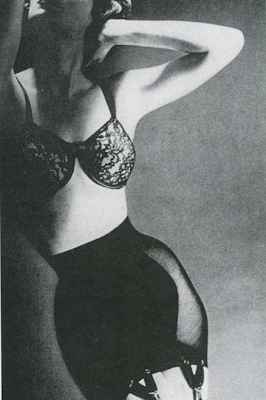The readings for this week tell us that magazines have only been around since the end of the 19th century -- but the way I see, that's over 100 years of changing scenes, fashion trends and endless increases in the technology. That thought in my head is what stuck as I read through the pages and is why the following spread from Harper's Bazaar caught my eye. The caption said the design created a cinematic pacing of fleeing legs with the headline "New Design in Movement."
Between Glamour, Marie Claire, and Cosmo I found a number of spreads that could have worked for this assignment, but I honestly didn't want to scan them in -- thus the internet was a nice alternative. The model on the right-hand side of this spread from The Ecologist, a British environmental magazine, has the same 90 degree angle look that the reading spoke of.
Another Harper's Bazaar spread -- in March 1954 -- offers a lot of influence for fashion magazines today. The reading said in this spread "the reflected curvature of the body in the two photographs is used to create a pair of arcs of visual force which meet at an imaginary point below the page. Depth is created by the contrasted scaling of Lillian Bassman's photographs, and not how the eye, invisible in the right hand picture, is also cropped out of the left to ensure that the reader focuses on the body, not the face."
In today's world of America's Next Top Model and the high fashion of New York Fashion Week, a model's face is nearly as important as their body -- however, it is ultimately the way they wear the products they are fashioning that will make or break their careers.
In this spread from Grazia, I saw many similarities to the spread from Harper's Bazaar. Despite the fact that women are used in this Michael Jackson tribute, their faces being masked by hats and hair allows the fashion resemblance to Jackson's signature looks undeniably familiar.





No comments:
Post a Comment